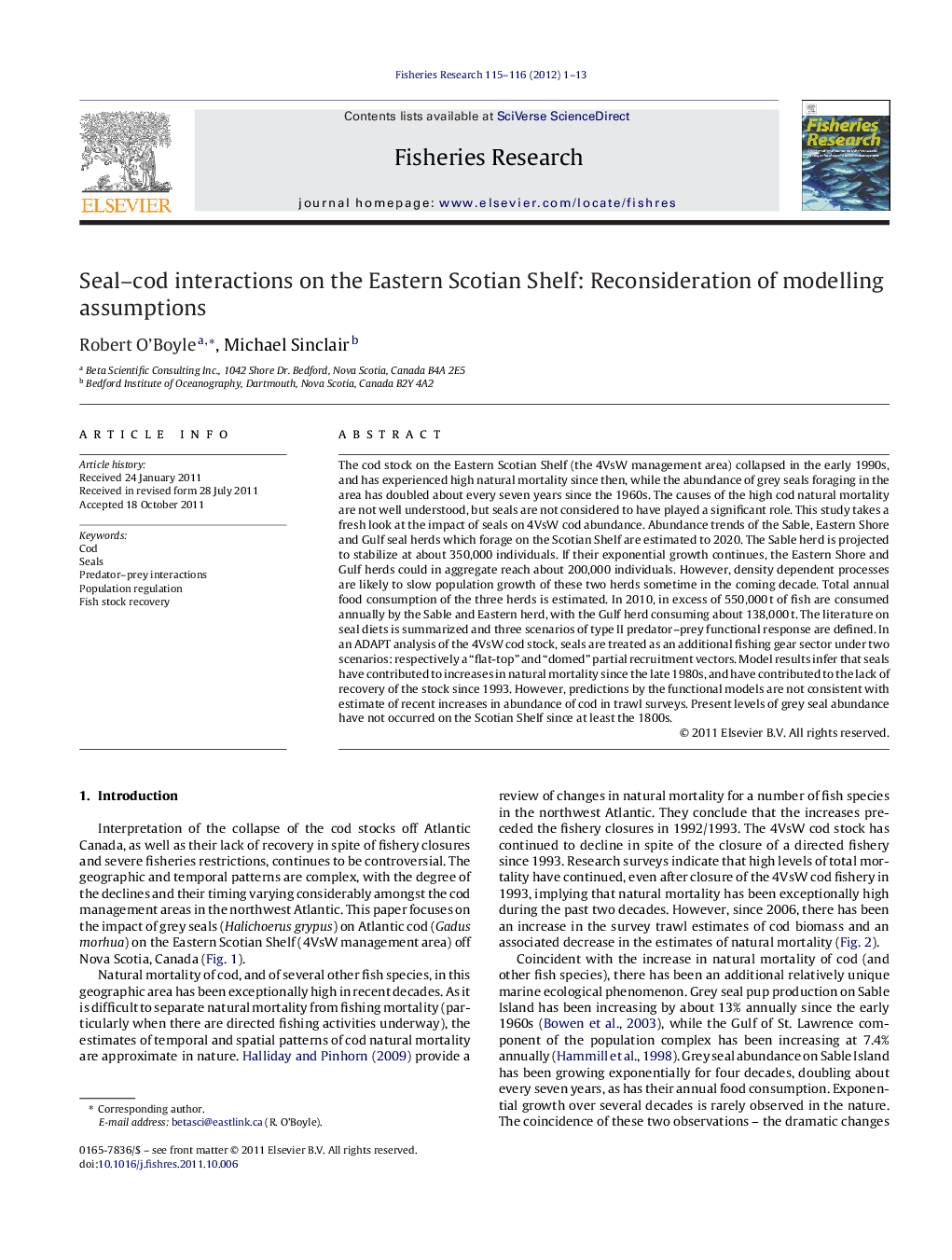| Article ID | Journal | Published Year | Pages | File Type |
|---|---|---|---|---|
| 4543460 | Fisheries Research | 2012 | 13 Pages |
The cod stock on the Eastern Scotian Shelf (the 4VsW management area) collapsed in the early 1990s, and has experienced high natural mortality since then, while the abundance of grey seals foraging in the area has doubled about every seven years since the 1960s. The causes of the high cod natural mortality are not well understood, but seals are not considered to have played a significant role. This study takes a fresh look at the impact of seals on 4VsW cod abundance. Abundance trends of the Sable, Eastern Shore and Gulf seal herds which forage on the Scotian Shelf are estimated to 2020. The Sable herd is projected to stabilize at about 350,000 individuals. If their exponential growth continues, the Eastern Shore and Gulf herds could in aggregate reach about 200,000 individuals. However, density dependent processes are likely to slow population growth of these two herds sometime in the coming decade. Total annual food consumption of the three herds is estimated. In 2010, in excess of 550,000 t of fish are consumed annually by the Sable and Eastern herd, with the Gulf herd consuming about 138,000 t. The literature on seal diets is summarized and three scenarios of type II predator–prey functional response are defined. In an ADAPT analysis of the 4VsW cod stock, seals are treated as an additional fishing gear sector under two scenarios: respectively a “flat-top” and “domed” partial recruitment vectors. Model results infer that seals have contributed to increases in natural mortality since the late 1980s, and have contributed to the lack of recovery of the stock since 1993. However, predictions by the functional models are not consistent with estimate of recent increases in abundance of cod in trawl surveys. Present levels of grey seal abundance have not occurred on the Scotian Shelf since at least the 1800s.
► Scotian Shelf cod collapsed in early 1990s, and have experienced high natural mortality since; causes are not well understood. ► Present high grey seal abundance has not occurred on the Scotian Shelf since at least the 1800s. ► Grey seal predation is modelled assuming flat and domed partial recruitment under three type II functional response options. ► Model suggests that seals have contributed to both natural mortality increase and lack of cod stock recovery. ► Model predictions are not consistent with recent observed cod increase in trawl surveys, which need to be confirmed.
